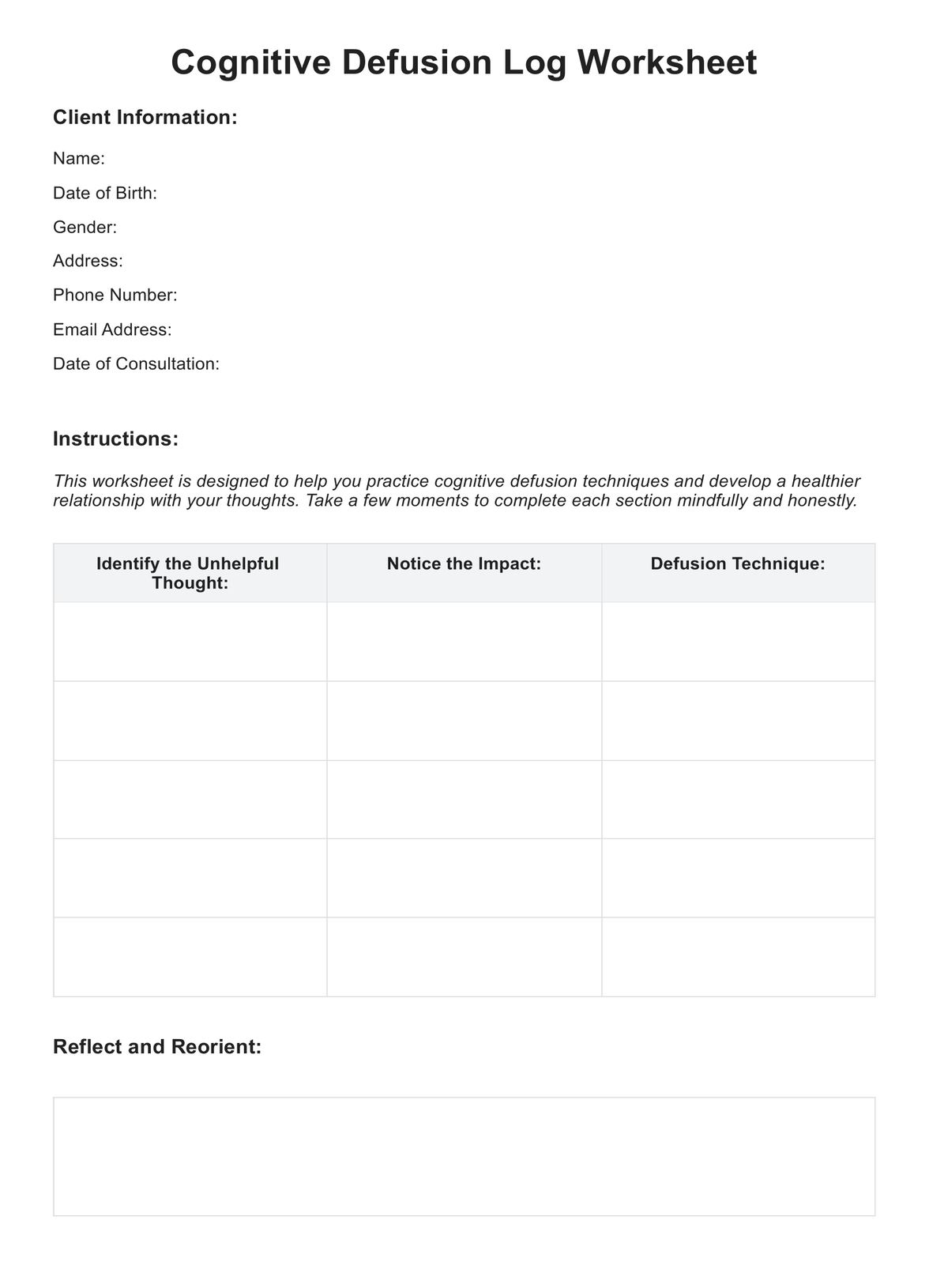The worksheet can help you develop a healthier relationship with your thoughts by increasing self-awareness, challenging negative thinking patterns, and promoting mindfulness and acceptance. It offers a systematic approach to recognizing the impact of unhelpful thoughts and applying defusion techniques to distance yourself from them.

Cognitive Defusion Worksheet
Discover mental freedom with the Cognitive Defusion Log Worksheet. Challenge negative thoughts and break free from their hold. Start now!
Cognitive Defusion Worksheet Template
Commonly asked questions
Yes, the worksheet is designed for individuals to use independently. It can be a valuable tool for personal reflection, self-help, and promoting mental well-being. However, if you require additional support, seeking guidance from a qualified healthcare professional is advisable.
Yes, the Cognitive Defusion Log Worksheet provides a list of defusion techniques. Some examples include thanking your mind, naming your story, singing the thought, leaves on a stream, and thoughts as weather. You can select the technique that resonates with you or experiment with different techniques to find what works best.
EHR and practice management software
Get started for free
*No credit card required
Free
$0/usd
Unlimited clients
Telehealth
1GB of storage
Client portal text
Automated billing and online payments











